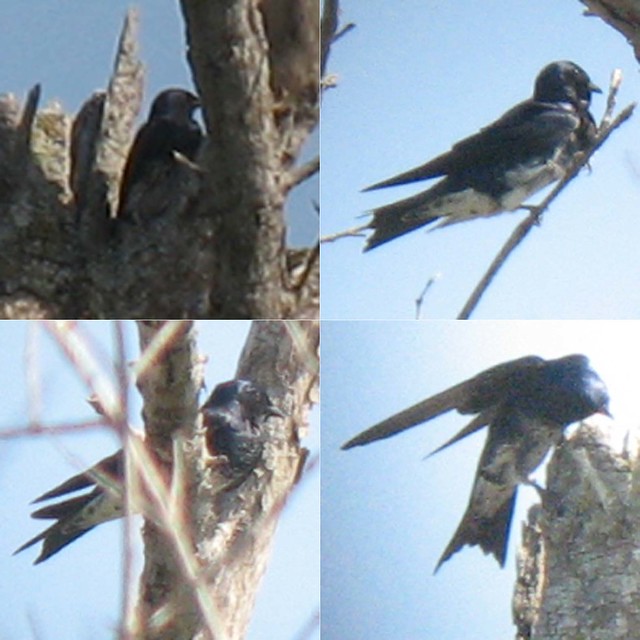Cladus: Eukaryota Name Progne dominicensis (Gmelin, 1789) Reference Systema Naturae 1 pt2 p.1025 Vernacular names The Caribbean Martin or White-bellied Martin, Progne dominicensis, is a large swallow. It breeds on Caribbean islands from Jamaica east to Tobago. It is closely related to 2 species to which it formerly was considered conspecific-P. sinaloae (Sinaloa Martin) and P. cryptoleuca (Cuban Martin). There are sight records from mainland Central and South America, and most birds appear to migrate to the South American mainland. A single bird was recorded in Key West, Florida, on May 9, 1895 (AOU 2000). It has at various times been considered alternatively as a race of the Purple Martin, Progne subis. Adult Caribbean Martins are 18.5 cm in length, with a forked tail and relatively broad wings, and weigh 40g. Adult males are a glossy blue-black with contrasting white lower underparts. Females and juveniles are duller than the male, with grey-brown breast and flanks and white lower underparts. The Caribbean Martin nests in cavities in banks and buildings, or old woodpecker holes. 3-6 eggs are laid in the lined nest, and incubated for 15 days, with another 26-27 to fledging. Just as the purple martin, this species may compete with other passerines for nesting cavities. In particular, the main foe is the house sparrow [1] in urban areas, where they mostly use man-made structures, whereas in more rural locations Picidae holes in coconut trees are favored, and there is less competition with the sparrows. Caribbean Martins are gregarious birds which hunt for insects in flight. Their call is a gurgly chew-chew. References American Ornithologists' Union (AOU) (2000): Forty-second supplement to the American Ornithologists' Union Check-list of North American Birds. Auk 117(3): 847–858. DOI: 10.1642/0004-8038(2000)117[0847:FSSTTA]2.0.CO;2 BirdLife International (2004). Progne dominicensis. 2006. IUCN Red List of Threatened Species. IUCN 2006. www.iucnredlist.org. Retrieved on 12 May 2006. Database entry includes justification for why this species is of least concern ffrench, Richard; O'Neill, John Patton & Eckelberry, Don R. (1991): A guide to the birds of Trinidad and Tobago (2nd edition). Comstock Publishing, Ithaca, N.Y.. ISBN 0-8014-9792-2 Hilty, Steven L. (2003): Birds of Venezuela. Christopher Helm, London. ISBN 0-7136-6418-5 Turner, Angela & Rose, Chris (1989): Swallows and martins: an identification guide and handbook. Houghton Mifflin. ISBN 0-395-51174-7
Source: Wikipedia, Wikispecies: All text is available under the terms of the GNU Free Documentation License |
|

